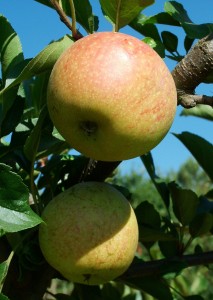22
Sep
White House Proposes Increased Pesticide Registration Fees
(Beyond Pesticides, September 22, 2011) As part of his $3 trillion deficit-reduction plan, President Obama has proposed to increase pesticide and chemical registration fees and reinstate tolerance assessment fees in order to cover the costs of evaluating the chemicals’ health and environmental effects data. The U.S. Environmental Protection Agency (EPA) currently collects fees from companies seeking to register their pesticides or maintain existing registrations; however these fees do not cover the full cost of the review process. The White House fee collection proposal will save $740 million over 10 years.
Under the reregistration program, pesticides that were registered prior to November 1, 1984 are evaluated to ensure that they continue to meet current regulatory standards. EPA began this effort under 1988 amendments to the Federal Insecticide, Fungicide and Rodenticide Act (FIFRA). The amendment also requires EPA to review all other registered pesticides on a 15-year cycle to ensure that registrations reflect current regulations.
The reregistration of pesticides under FIFRA is a lengthy and ongoing process. Hundreds of pesticides currently registered and commonly used still lack a full assessment of their potential short and long-term effects on human health, particularly on children, and the environment. For example, EPA has failed to establish testing requirements, as mandated by law, to evaluate a pesticide’s capacity to cause endocrine disruption. In 2007, EPA published a list of 67 pesticide ingredients that it intends to review for endocrine disrupting effects, once it finalizes its standards for review. Scientific studies are increasingly finding endocrine effects at extremely low doses (as low as 1 part per billion). These effects are also being discovered in wildlife.
Beyond Pesticides has said that EPA‚Äôs general registration process is flawed because the agency does not evaluate whether hazards are ‚Äúunreasonable‚ÄĚ in light of the availability of safer practices or products. Though we applaud the effort to place the financial burden of registering pesticides on the manufacturer, Beyond Pesticides urges EPA to take a more precautionary approach, especially given the history of incomplete data or assessments leading to protective action decades after approval lead to widespread pesticide use. With some chronic endpoints, such as endocrine disruption, the agency has not adequately assessed chemicals for certain health risks.
There are several historic examples of pesticides that have been restricted or cancelled due to health risks decades after first being registered. Chlorpyrifos, which is associated with numerous adverse health effects including reproductive and neurotoxic effects, had its residential uses cancelled in 2001. Others like propoxur, diazinon, carbaryl, aldicarb, carbofuran, and most recently endosulfan, have seen their uses restricted or canceled after years on the market. Unfortunately, these pesticides and chemicals can still persist in the environment and in our homes years after they have been banned.
Source: E & E News
All unattributed positions and opinions in this piece are those of Beyond Pesticides.














